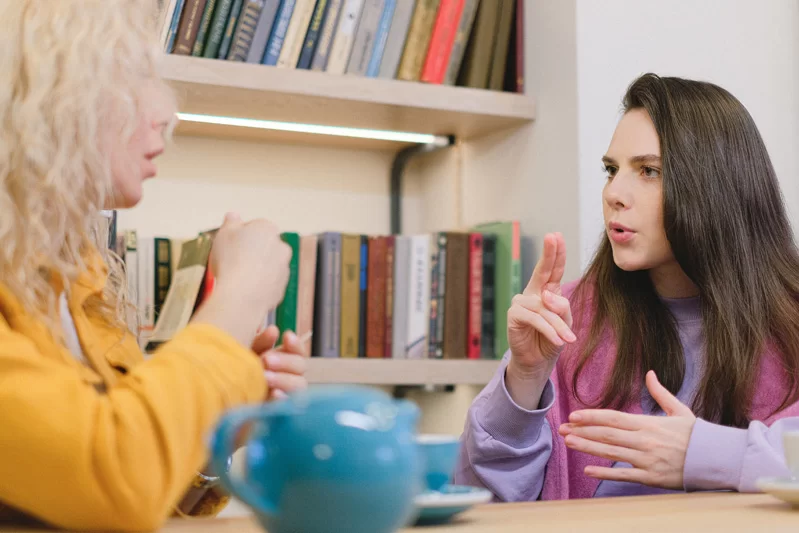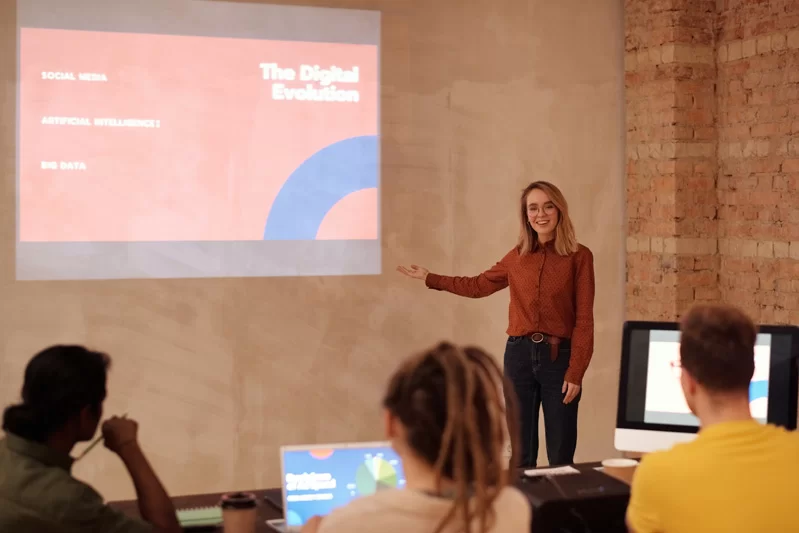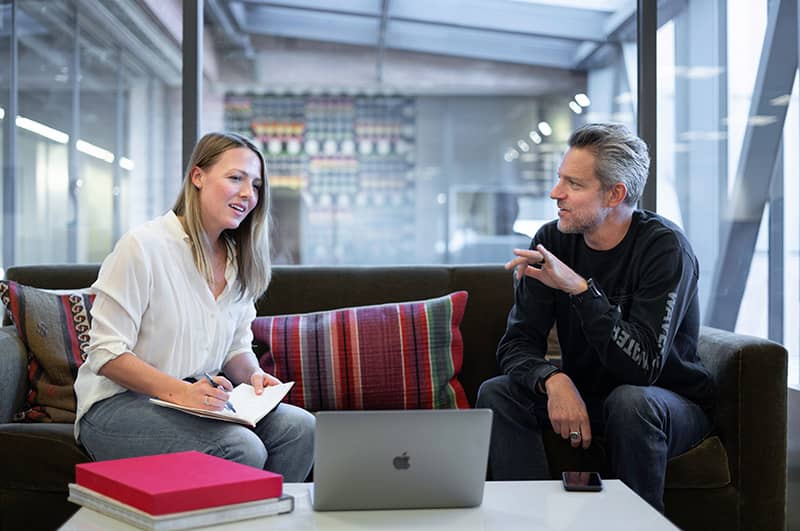In an era where digital presence is imperative, having a responsive website is no longer optional—it’s essential. At Constructive Visual,...

Increasing the visibility of your website requires more than simply black-hat tactics! To be fair, there are a slew of practical approaches to boost your conversion rate, including testing different Call-To-Action (CTA) buttons, website content, shortening your page, swapping out images, and enlarging buttons.
But if you don’t focus on the more strategic side of things, like the psychological process that goes into a winning site, your website optimisation efforts are nothing more than a theory/prediction. Having a professionally designed website for your business embraces these psychological concepts and applies these strategies directly to your website copy.
A better offer and a higher conversion rate can be achieved by applying the following seven psychological principles.

When determining whether or not a website is a success, various factors must be taken into account. Conversion rates are the best indicator of a successful website for the vast majority of businesses. The psychology of colour may influence web design conversions, didn’t you know?
The website’s success can be attributed to its user experience and user interface design. Just as important is the way you employ colour in your site design. To affect people’s attitudes and emotions, more and more web designers are turning to colour psychology as an effective technique.
Colour use in web design can:
In short, colour use helps boost website conversions as well as create a unique visual identity for your company. By incorporating colour psychology into their designs, web designers can achieve great results. From subtle use of colour to bold palette choices, there are countless combinations that you can use to create a truly standout website design.
When it comes to using colour for web design, use the basics of colour theory as your guide. This includes understanding different types of colour, such as warm and cool colours, saturation levels and even the psychology behind each hue. In addition, use contrast to make key elements stand out from the rest. With all these tips in mind, you’ll be able to use vibrant colours effectively on your website and create an eye-catching design that attracts visitors and encourages them to take action.
By utilising colour correctly in web design, you can achieve great results – both aesthetically and functionally. So use this powerful tool wisely and reap the rewards of an attractive, engaging web design. Colour use can make all the difference when it comes to creating an effective and aesthetically pleasing website, so put the time and effort into using colour to your advantage. It’s no surprise that the use of colour is one of the most important elements in web design – use it right, and you’ll be able to create a stunning web design that really stands out from the competition!

It is important to use aspects of psychology in your website copy for things such as urgency and guarantees to influence visitors to convert or use your product or service. The use of language in copywriting is a powerful tool that helps create an emotional connection with readers and compels them to take action.
Some aspects of psychology you can use include the idea of scarcity, which creates urgency and encourages people to act quickly. Social proof, such as testimonials, can also be used to highlight the value of your product or service. Positive language use throughout the copy can evoke positive emotions and feelings associated with using your product or service. Additionally, including guarantees builds trust between you and potential customers, making it more likely for them to use your services or products.
By using psychological principles when crafting website copy, you are able to build relationships that can help convert readers into customers. The use of language in the copy is an important tool to use when trying to create compelling and persuasive website design copy. It’s important to use the right words because they are what will ultimately drive people to make a purchase or use your service. Through carefully crafted web design copy, you can communicate key messages that inspire people to take action.
Understanding the psychological principles of website design copy will help you build successful relationships with potential customers and turn them into loyal ones! By understanding the nuances of psychology, you can craft effective copy that speaks directly to your target audience. As a result, this will lead to more conversions and success for your business.
The more urgent your landing page or website, the more likely it is that consumers will follow through with the action you want them to take (i.e., convert). Anxieties spur people into action. Conversions are frequently hampered by difficulties of cognitive friction, such as people taking too long to act or not responding at all to our calls to action. Raising the urgency of a campaign can significantly boost conversion rates by cutting down on the time it takes to complete tasks.

When crafting your website design copy with the psychology of pain, it’s important to understand what customers are aiming to avoid. Pain can be a powerful motivator and using it in your web copy can really help you drive conversions.
By understanding the psychology behind pain avoidance, you’ll be able to make sure your customers see how making a purchase will free them from any potential difficulties or obstacles they might experience if they don’t take action. They should have an emotional connection with their decision and feel like their actions are preventing any potential suffering.
Using terms such as “avoid” or “escape” within your copy can be effective in triggering this kind of emotion, as well as invoking feelings of hope and optimism. You can also use words such as “prevent” or “protect” in order to emphasize the benefit of taking the desired action.
Overall, by understanding the psychology of pain and using it wisely in your web copy, you can create a sense of urgency with customers and increase their likelihood of conversion. By tapping into their fears and providing them with an out-of-the-ordinary solution, you are sure to see improved results from your website traffic. So make sure you take advantage of this powerful motivator!

When it comes to creating a successful website, the psychology of pleasure should be one of your top priorities. According to a recent study, both pleasure and satisfaction play a key influence in determining whether a website is a successful or not. By understanding the psychology behind pleasure and satisfaction, you can create an engaging experience for your visitors that will encourage them to return time and again.
The psychology of pleasure helps to make sure that users find enjoyment in the experience they have on your website. This could involve designing elements like typography, images, colour palette and other visuals that evoke positive emotions in the viewer. Additionally, good web copy should also be crafted with the psychology of pleasure in mind to ensure it’s persuasive and compelling enough to draw readers in and keep their attention throughout the course of their visit.
By understanding how pleasure psychology plays into website design, you can create an experience that is visually stimulating and emotionally satisfying. This will not only increase user engagement but will also result in customers forming a positive perception of your brand, which in turn will encourage them to return time and again.
It’s therefore essential to take the psychology of pleasure into account when designing or writing web copy for your site – if you don’t, then there’s a good chance that users may be disappointed with their experience and find something else more appealing. So, make sure you keep pleasure psychology at the forefront of your mind when creating web content and design elements – this will ensure that everyone has an enjoyable experience on your website, leading to increased customer loyalty and conversions!

Storyselling on your website is the art of delivering a unique and engaging story to engage visitors and inspire them to take action. By weaving in elements such as characters, plotlines, settings and other features of storytelling, you can create an interactive experience that will help captivate your customers’ attention.
The effectiveness of storytelling for selling on websites cannot be understated. It’s more than just telling a good story; it requires using the right words in order to really draw people in. Incorporating visuals, audio, video and engaging content into your website can amplify the appeal of your narrative even further.
Your website should become a platform for you to tell stories about your business or product that emotionally connect with potential customers. It should be a way to engage your audience and give them a reason to stay on your website longer. You can tell stories about the company’s history, successes, or show customer testimonials – all of which are great ways to build trust between you and potential customers.
At its core, storyselling is an art form that allows you to create content that will inspire people and help them make informed decisions. By leveraging the power of visuals, audio recordings etc. Storytelling on websites is also an opportunity to showcase your brand values in a meaningful way. You can demonstrate what makes your business unique by sharing stories that highlight its culture, mission, and values. This helps create an emotional connection with users as they get a glimpse into the heart and soul of your company.
By leveraging storytelling techniques, you can not only connect with potential customers on an emotional level but also provide them with valuable information that helps them in making informed decisions. Effective website storytelling is all about creating engaging content that encourages people to take action. Whether it’s signing up for a newsletter, purchasing a product or service, or just reading more about your business, storyselling can be used to entice users and encourage them to make a purchase.
You can easily make a lasting impression by this method. The most successful technique to turn visitors into customers is through the use of stories. Authenticity is of utmost importance. Describe what drives you to do what you do and why you do it. It’s easy for your customers to know if you’re lying, but they’ll fall in love with the real narrative behind your company.
When done right, website storytelling can be incredibly powerful. It gives customers a glimpse into who you are as a brand, what matters to you as a business, and how you differentiate yourself from competitors.

When building website copy, it is important to keep Psychology of Risk Aversion in mind. People have an innate sense of security when risk is low, so small requests are usually complied with more readily than large ones. This is the premise behind the “foot in the door” strategy used by many salespeople – start off with a smaller request and work your way up.
By beginning with something simple and non-intimidating, you can build trust and rapport with your customers. Once they feel comfortable enough to engage further, you can explain why you believe your product or service would be beneficial for them. Psychology of Risk Aversion means that if customers already trust you, they are much more likely to agree to a larger request that they may have otherwise refused.
Using Psychology of Risk Aversion in your website copy is an effective way to increase engagement and drive conversions. By understanding the psychology behind risk aversion, you can craft persuasive content that will encourage more people to take action on your website. It’s important to keep your language concise and clear, so as not to overwhelm visitors with too much information at once. Make sure to highlight the most important points and make it easy for customers to understand why they should choose your service or product. With Psychology of Risk Aversion, you can create compelling web copy that turns visitors into customers!
By leveraging Psychology of Risk Aversion in your website copy, you can better engage with potential customers and create a sense of trust. You can also use this strategy to increase conversions by making it easier for people to say “yes” to larger requests in the future. Psychology of Risk Aversion is a powerful tool that can be used to make your website copy more persuasive and effective, so start using it today!

In web design, the Power of Reciprocation can be used to acquire users’ trust and increase interaction with a website. This is an important principle in social psychology that states that humans have an inherent tendency to return favours or good deeds. By implementing this law in user interface design, you are setting yourself up for successful interactions with your website’s visitors.
The Power of Reciprocation isn’t just about bringing people together; it also helps create feelings of indebtedness and loyalty. If you give something away upfront, such as a free download, special offers or discounts, users will feel obliged to reciprocate by engaging more deeply with your site. In addition, if they have had a positive experience on your site, they’ll be more likely to remember it and come back in the future.
Reciprocation can be used as a method of gaining trust from website visitors. If users feel that you are providing them with something valuable without expecting anything in return, they will become more attached to your site and develop trust for your brand.
By taking advantage of the Power of Reciprocation, you can ensure that users have the best possible experience on your website and foster long-term relationships between your business and customers. This law is a powerful tool when it comes to designing an effective website – one that draws in customers and keeps them coming back time and again.
It is possible to implement the Power of Reciprocation in a number of ways. You can offer free incentives for signing up or downloading your site, provide helpful tips and advice on topics related to your business, or simply show a genuine appreciation for users’ engagement with your website. By showing customers that you value their loyalty, they will be more likely to visit your website and share it with others.
Ultimately, implementing the Power of Reciprocation in website design is an excellent way to increase customer trust, retain loyal customers, and encourage repeat visits. By offering users valuable information without expecting anything in return, you can create a positive relationship between them and your brand – one that will benefit both parties in the long run. So, what are you waiting for? Start employing the Power of Reciprocation in your website design today! By doing so, you will be on your way to building a highly engaged customer base that values and trusts your brand.

The psychological concepts are not simply a means to boost sales or leads; it’s a way to better understand your customers. It gives you the opportunity to build stronger relationships with the customers who are the backbone of your business and to improve their purchasing experience.
Please remember that it is not designed to deceive customers, but rather to be utilised as a tool to help you better communicate your message.
Loved this article? Please consider sharing it with your friends…

Peter Lowen
Senior Web Developer | CEO
Peter Lowen is the founder and CEO of Constructive Visual, a website design and hosting company. He has been creating websites since 2005 and writes content on business, marketing, web design, sales training, web hosting and WordPress related topics.
Responsive Web Design – Best Practices for a Responsive Website
In an era where digital presence is imperative, having a responsive website is no longer optional—it’s essential. At Constructive Visual,...
Strengthen your Perth & Wheatbelt business’s online presence with tailored website design and hosting, raising visibility, enhancing user experience, and...
Branding is essential for any business, big or small. It helps to create a unique identity and sets you apart...
Creating a Strong Online Foundation – Small Business Web Design in Perth
In today’s digital age, having a well-designed website is crucial for small businesses in Perth. A professionally designed website can...

We are an SEO & web design agency located in Northam, Western Australia.
Address: PO Box 985,
Northam WA 6401
Location: Perth, Western Australia
Phone: (08) 6118 9186
Email: Contact Us
Services
Information




